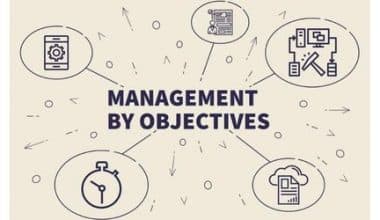Product management is a corporation’s essential business strategy to support and coordinate all the operations involved in designing, marketing, and launching a product. The department responsible for product development typically holds the position of product manager. For the product manager to carry out the task given to them effectively, they need these product management tools. Keep reading, as this article reveals all you need to know about product management tools and the top free software options in 2023.
What Do Product Management Tools Mean?
Product management tools assist teams in managing specific product life cycle stages. This can include things like:
- Product launch preparations
- Planning for software development
- Analyses of products
- Prototyping
- Or even product promotion
For example, a product roadmap tool, for example, assists you in mapping out your product vision and describing the items you’ll handle along the route.
However, specific product manager software tools, such as a comprehensive project management tool, provide a centralized platform for everything involved in producing and managing products.
This is critical for a remote product team since utilizing a single virtual product management system with the appropriate functionality makes sense.
What Features Should You Search for in Product Management Software?
Here are some essential characteristics to look for in a product management tool:
- Capabilities for Brainstorming: Creating a new product necessitates thinking outside the box. And, regardless of how weird your notion is, the management tool should assist you in making sense of it.
- Work management: The app’s task management tools, whether a Kanban board or built-in task prioritizing, should be extensive.
- Templates: Your management tool should include customizable templates to assist you in getting started quickly.
- Integrations: Unfortunately, very few product manager tools can meet all of your requirements. As a result, your management tool must link with popular workplace software for the best usefulness.
However, those aren’t the only factors to consider.
You’ll go insane if you have to navigate through several tabs only to see if things are moving by your product plan.
As a result, outstanding usability is crucial when selecting the right product management software. Not to mention that it should not be an expensive tool!
What is Product Management?
Product management oversees a product’s complete lifecycle to deliver a successful outcome to the customer. It entails various tasks such as user research, product planning, product marketing, and more.
What Skills Does a Project Manager Require?
A good product manager must be able to:
- Accurately analyze and understand a feature request or user feedback
- Set and monitor key performance indicators (KPIs) such as customer satisfaction.
- Define the product vision by setting realistic and attainable targets.
- Communicate clearly to the product team the expectations of stakeholders.
- Think deliberately and forecast accurately.
- Understand the fundamental principles of user experience design.
- Manage your time and resources wisely.
However, these are only some of the general competencies required of an agile product manager. Finally, it comes down to what the business or project needs.
What Are the Tools Used by a Product Manager?
Tools used by product managers are called product management tools. These tools help manage, control, monitor, and make research products before release.
A product manager will need to use a variety of tools, such as
- Tools for doing industry analyses
- Software for flowcharts and road maps
- Tools for user surveys and analysis
- Tools for project management
- Tools for group communication and collaboration
What Are the Three Main Areas of Product Management?
The three main areas of product management that every product manager should concentrate on are:
- Product discovery.
- Designing products.
- Developing products.
The Best Product Management Tools
Product teams utilize product management solutions for any or all of the following product-related tasks: feature prioritization, managing sprints, developing a product roadmap, user journey mapping, consumer research, product road mapping, feature prioritization, and managing product releases.
#1. Craft.io: Best for prioritizing a product engine.
With Craft.io’s unique priority item, you can rate jobs and features based on their reach, impact, confidence, and effort (RICE) scores to quickly decide the best next steps across your development pipeline.
Features
- The product management platform called Craft.io has tools for gathering customer feedback, organizing workflows, and creating roadmaps.
- You may control workload capacity, set priorities for essential choices, and establish product specifications on the platform.
- Craft.io is your complete product system of record by integrating and gathering disparate product data.
- It keeps track of every aspect of the product, including stakeholder and team member input and strategy documents for OKRs, personas, and themes.
- Additionally, Craft.io has many collaboration and sharing tools, roadmap views, status tracking, and customized and shareable data visualization options.
- Craft.io has a 30-day free trial and monthly prices starting at $39 per person (paid annually).
#2. Monday: The best for scalability
Teams of all sizes may plan, track, and manage their daily tasks using the online product management platform on Monday.com. From weekly iterations to broad product roadmaps, Monday.com assists teams in defining clear ownership, tracking and analyzing their work, managing sprints, and collaborating.
Features
- Teams can collaborate online with ease thanks to the agile platform.
- The Work OS from Monday.com comprises visual and adaptable components that work together to provide any agile workflow your team needs.
- It offers task dependencies, milestones, Gantt and Kanban views, and project analysis.
- Monday.com’s monthly subscription costs $17 for two users. A 14-day trial of the software is available.
#3. Walling: The best method for arranging thoughts and tasks visually.
One of the most visually appealing product management tools is Walling, which gives you a simple interface to arrange and manage ideas and activities. Walling stands out because it allows you to set tasks, concepts, notes, and files side by side to see your work’s broad picture.
Features
- The tool offers several views, including task lists, calendars, database tables, and the Kanban view.
- The collaboration tools offered by Walling include the ability to make comments, assign tasks, and add due dates and reminders.
- A free plan for up to 100 bricks is available from Walling. Paid plans start at $5 per user per month.
#4. Propad: The best tool for lifecycle product management
An efficient solution for managing your team’s product roadmap, ProdPad, keeps everyone informed and on the same page.
Features
- Experts in product management will value capabilities like product spec templates, versioning and annotated drawings, and accurate user personas.
- Routine cleanup and internal naming conventions can lessen the discomfort.
- With a connection through Zapier, integration choices include Slack, Trello, Jira, Active Directory, Azure DevOps, Confluence, Doorbell.io, Dropbox, GitHub, Google Apps, Pivotal Tracker, and over a thousand more.
- ProdPad features a free 7–30 day trial period and monthly prices starting at $99
#5. ClickUp: Best software for managing modular products
By combining tasks, documents, chat, goals, and dashboards into one application, ClickUp, a product management platform, claims to be the “one app to replace them all.”
Features
- Important elements for product management include task boards for product roadmaps, collaborative documents for idea sharing, spring management tools for development, and stakeholder access guest accounts.
- To view what each team member has on their plate in real-time, you’ll also have access to native time tracking and workload capacity reports.
- With over 1,000 Zapier integrations, ClickUp offers native integrations with numerous more tools, like Slack, G Suite, Dropbox, and many more.
- With some functionality restrictions, ClickUp is free for an infinite number of users.
- Paid subscriptions start at $5 per user per month and come with a 30-day money-back guarantee if you’re unhappy with the app.
Software Product Management Tool
#1. Tools for user monitoring and analysis (such as Pendo and Amplitude)
These tools can be incredibly insightful and insightful sources of information about how users of your software or visitors to your website interact with your product and content.
Product analytics solutions capture and assist you in analyzing what your consumers do, as opposed to customer surveys or interviews, which are essential tools in and of themselves.
Using a tool like Pendo or Amplitude might reveal crucial facts about what connects with your visitors and what doesn’t if your business sells software or maintains a lot of content on a website.
#2. Using a road map tool (such as ProductPlan)
Any list of product management tools must include software for road mapping.
Spreadsheets or slide decks, for example, are non-native roadmap applications, and using them to create and maintain your product roadmap will result in significantly more work, make it less flexible and easy to share, and increase the likelihood of version-control problems that could impede the development of your product.
#3. Customer survey software (such as SurveyMonkey or Typeform)
With web-based survey tools like SurveyMonkey or Typeform, you can create a survey quickly and easily.
Whether you want to offer multiple-choice questions, drop-down lists, or just open comment fields, these tools have a wide variety of pre-formatted questions.
Then you can quickly track and analyze the results after sending the survey to your customers.
#4. Software that records customer interviews (such as GoToMeeting or Zoom)
It’s usually a good idea to record phone conversations with customers, even if you’re merely phoning to respond to a question.
It’s simple to record those chats and use them afterward using a program like Zoom or GoToMeeting.
You never know when a consumer will share insightful advice, pose a query that many other users will have, or explain a unique reason for utilizing the product that you might not have otherwise considered.
#5. Software for presentations (like PowerPoint or Keynote)
We frequently draw attention to the ineffectiveness of roadmap-presenting software.
However, it doesn’t follow that PowerPoint and Keynote shouldn’t hold an essential place in your toolbox for product management.
Presentation decks can be beneficial to present your high-level goals, visions, and ambitions to internal audiences within your company and external audiences like clients.
For instance, using vision decks to present your product’s vision to a group of executive stakeholders might be effective in getting their support.
Using presentations to provide sales training or education industry experts about your product can also be quite successful.
Free Product Management Tools
Here is a list of the top free product management tools:
- Productstash
- Taskade
- Roadmap
- Bitrix24
- Asana
- Backlog
- Confluence
- Odoo
- Coda
- Jira
Product Management Tools FAQs
What aspect of product management is the most difficult?
For many product managers, managing organizational communications, timelines, team alignment, and juggling several duties are the most challenging aspects of their jobs.
What is the role of a product manager?
The role of product managers, including crowdsourcing, creating, and curating ideas that will benefit customers, is the responsibility of product managers.
Conclusion
Each consumer group that product managers service or hope to acquire is given its unique profile, which they create over time. By utilizing product management technologies, they may achieve these goals successfully.
- PRODUCT MIX: Best Product Mix Strategies to Scale Any Business (+ Detailed Guide)
- Best 10 Customer Relationship Management (CRM) Software For Businesses
- Best Content Marketing Software Platforms In 2023
- Best Product Management Software and Tools In 2023






